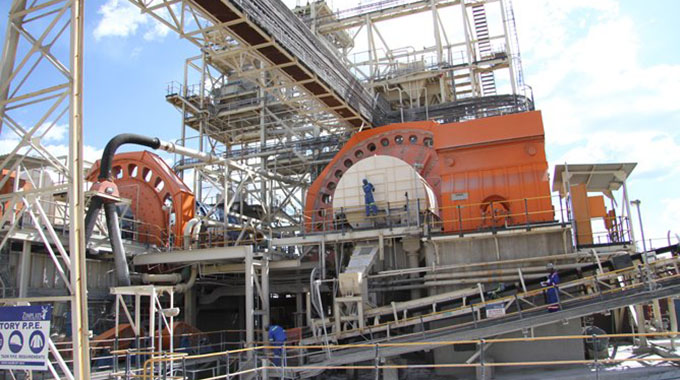Glimmer of hope for platinum miners
Local platinum producers are expected to cash in on projected firm global demand after the 2024 full-year deficit was revised upwards due to limited supply.
This comes after some of Zimbabwe’s platinum producers, taking cue from their South African parentage, laid off workers citing the strain on operations occasioned by record global metal prices.
All three of Zimbabwe’s platinum mines have South African roots. Zimplats is controlled by Impala Platinum Mines, Mimosa is co-owned by Anglo-American and Sibanye Stillwater while Unki Mine is a unit of Anglo-American, which all significantly cut their employment numbers due to low platinum prices.
Zimbabwe’s top platinum group metals producer, Zimplats, terminated contracts for 67 employees in April this year, which is 1,6 percent of the total permanent workforce, as it sought to contain costs.
In March this year, the country’s oldest platinum producer, Mimosa Mining Company, laid off 33 managers and supervisors due to the depressed platinum prices on international markets, which it said had trended down since April 2023.
The miner added that during the same period, platinum prices declined by 35 percent. But limited supply in the first quarter may just provide the relief producers of the precious metal were waiting for.
Platinum is Zimbabwe’s second-largest mineral after gold. Between them, platinum and gold account for more than 50 percent of the country’s export revenue while mining in general brings in over 75 percent of the export earnings.
According to the World Platinum Investment Council (WPIC), platinum supply during the first quarter of this year was depressed, with the 2024 full-year supply also forecast to be a near-record low as supply from countries like South Africa and Russia slows.
During the first quarter of 2024, producers like Anglo American Platinum’s total PGM production volumes stood at 834100 ounces, which was 7 percent below the same quarter last year.
Own-managed mines PGM output decreased by 6 percent to 504 300 ounces primarily at Amandelbult and Mototolo, while both Mogalakwena and Unki’s production were in line with the prior period.
Total PGM sales volumes (from production, excluding sales from trading) were broadly flat at 707 500 ounces according to the group.
Its local unit, Unki Mine’s total PGM production remained flat at 62 800 ounces.
Platinum and palladium production at Unki rose by a marginal 1 percent each while rhodium rose 4 percent above the same quarter last year.
Further gains were offset by production declines recorded in other PGMs, which went down 3 percent to 7 100 ounces. Unki recorded tonnes milled remained flat for the quarter under review.
WPIC has forecast platinum market deficit for the 2024 full year of 476 000oz.
“Total platinum supply in the first quarter is the second lowest in our time series, with 2024 full-year also forecast to be a near-record low,” said WPIC.
According to the quarterly report, automotive demand hit a seven-year high in the first quarter of 2024 and is expected to remain high for the full year.
Global jewellery demand increased 5 percent during the quarter driven by 53 percent year-on-year growth in India.
However, industrial demand fell from a record high in 2023, yet remains 17 percent above the pre-Covid-19 average.
“Investment demand is set to remain positive in 2024 for the second consecutive year, supported by bar and coin demand in China.
“Above-ground stocks forecast to hit a four-year low for full year 2024,” said the WPIC.
The WPIC projects total mined platinum supply to decline 3 percent to 5 468 koz as a result of losses from South Africa and Russia.
South African supply is projected to fall 2 percent to 3 871 koz as cost-driven infrastructure closures offset increases from some expansion projects.
Producers, responding to margin pressure from declining basket prices, are implementing cost-cutting measures, including deferring development projects and reducing capital expenditure.
“These actions will likely impact longer-term platinum mine supply. Additionally, the closure of some high-cost production, such as Sibanye-Stillwater’s 4B Marikana shaft, has been announced in 2024,” the report explains.
During the first quarter period, global jewellery demand increased by 5 percent to 486 koz (+22 koz) on the back of strong demand in India, along with improvements in most regions barring China.
European demand in the period grew by 3 percent year-on-year in part as price differentials enabled the mass market/bridal segment to counter a shaky economic backdrop.-herald











